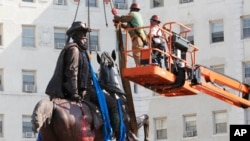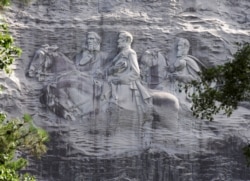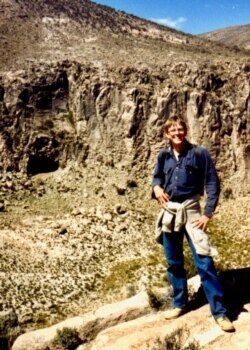Anthropologist Lawrence Kuznar isn’t a fan of Confederate statues, but he feels Americans have a lesson to learn from them.
“I'm not necessarily against taking them down,” says the professor of anthropology at Purdue University Fort Wayne, who is in the process of retiring.
“It's easy to get emotional and excited in a group and go tear down a monument. It absolutely does nothing to address a deep racial and political divide that really seems to be tearing this country apart. Even lawfully removing them, I think, should be done in a thoughtful way.”
As the Black Lives Matter protests gained momentum nationwide in the aftermath of the death of George Floyd in police custody, some demonstrators took it upon themselves to bring the statues down. Other monuments are being removed by local authorities. Overall, dozens of statues have been removed, and countless others vandalized nationwide.
In addition to Confederate statues, other monuments that are viewed as symbols of oppression and systemic racism are also being targeted. On Independence Day, a crowd tore down a statue of Christopher Columbus and dumped it in the Baltimore Inner Harbor.
There were 1,747 symbols honoring the Confederacy in public spaces, according to a 2019 report from the Southern Poverty Law Center (SPLC).
The majority of Confederate statues were not erected right after the Civil War.
The SPLC found construction of the monuments actually spiked in the early 1900s, and then again in the 1950s and ‘60s during times of civil rights tension.
“The stated purpose was to honor men who symbolized such values as valor and honor, but the actual purpose was to affirm the power relationships between Black and white southerners,” James Grossman, executive director of the American Historical Association, told VOA in an email. “These monuments reminded everyone, in a very public way, that white people would maintain their monopoly on power.
That, Kuznar says, is precisely the history Confederate monuments can tell.
“They say something about the U.S. If more people understood the political forces behind why many, not all, but many of the Confederate statues were erected in the Jim Crow era … (it’s) a rather dark chapter of the nation's history,” he says. “Taking the statues away makes it harder to bring that story out to people. Quite frankly, I think it makes it harder for us to tell and memorialize the full truth of the nation’s history.”
Jim Crow laws were state and local statutes enacted in the American South in the late 1800s and early 1900s to enforce racial segregation. While some might view removing statues as “whitewashing” history, others see taking them down as correcting a false narrative.
“Whitewashing history is what the statues were doing in the first place by setting up as heroes men who committed treason in defense of the supposed right of some people to own other people. That's the ‘whitewash,’” Grossman says. “That is the attempt to cleanse the reputations of men who deserve no honor for what they did or what they stood for.”
Kuznar points out that removing or destroying monuments isn’t new. Spanish conquerors destroyed Aztec and Inca monuments. Russia removed several Soviet-era statues after the fall of the USSR. The Taliban blew up a pair of ancient sandstone Bamiyan Buddhas in Afghanistan in 2001.
Kuznar, who has an archeological background, cautions against moving too quickly in the heat of passion or due to political expediency.
“I think communities erected these things. I think the communities themselves need to have some very sober, very serious discussion about why is that statue there,” he says. “Do we want to memorialize this person anymore? Can we use the statue to tell a more complete story of the nation's history? And for them to decide accordingly whether they want that there or not.”










